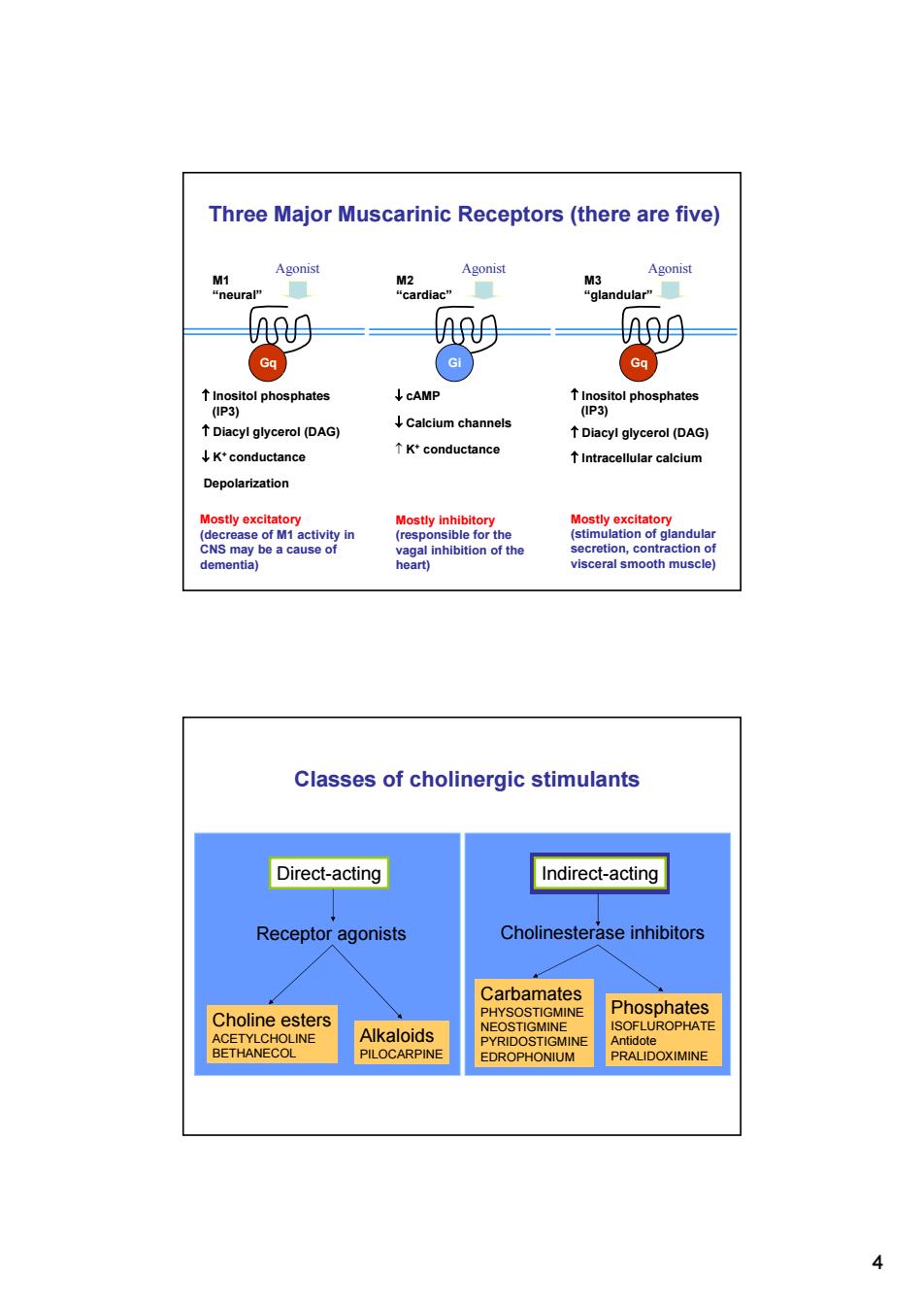正在加载图片...

Three Major Muscarinic Receptors(there are five) Agonist Agonist Agonist M1 M2 M3 “neural" “cardiac" "glandular' Gq Gi Gq ↑Inositol phosphates ↓cAMP Inositol phosphates (1P3) (IP3) Diacyl glycerol(DAG) ↓Calcium channels ↑Diacyl glycerol(DAG) ↓K'conductance 个K*conductance Intracellular calcium Depolarization Mostly excitatory Mostly inhibitory Mostly excitatory (decrease of M1 activity in (responsible for the (stimulation of glandular CNS may be a cause of vagal inhibition of the secretion,contraction of dementia) heart) visceral smooth muscle) Classes of cholinergic stimulants Direct-acting Indirect-acting Receptor agonists Cholinesterase inhibitors Carbamates Choline esters PHYSOSTIGMINE Phosphates NEOSTIGMINE ISOFLUROPHATE ACETYLCHOLINE Alkaloids PYRIDOSTIGMINE Antidote BETHANECOL PILOCARPINE EDROPHONIUM PRALIDOXIMINE 44 Agonist Three Major Muscarinic Receptors (there are five) Agonist Agonist M1 “neural” M2 “cardiac” M3 “glandular” Gq Gi Gq ↑ Inositol phosphates (IP3) ↑ Diacyl glycerol (DAG) ↑ Inositol phosphates (IP3) ↑ Diacyl glycerol (DAG) ↑ Intracellular calcium ↓ cAMP ↓ Calcium channels ↑ K+ conductance ↓ K+ conductance Mostly excitatory (decrease of M1 activity in CNS may be a cause of dementia) Mostly inhibitory (responsible for the vagal inhibition of the heart) Mostly excitatory (stimulation of glandular secretion, contraction of visceral smooth muscle) Depolarization Classes of cholinergic stimulants Direct-acting Receptor agonists Choline esters ACETYLCHOLINE BETHANECOL Alkaloids PILOCARPINE Cholinesterase inhibitors Carbamates PHYSOSTIGMINE NEOSTIGMINE PYRIDOSTIGMINE EDROPHONIUM Phosphates ISOFLUROPHATE Antidote PRALIDOXIMINE Indirect-acting